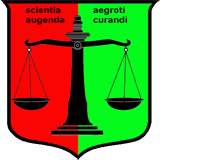Institute for Response-Genetics (e.V.)Chairman: Prof. Dr. Hans H. StassenPsychiatric Hospital (KPPP), University of Zurich |

|


|
Genetic versus Physical MapsThere are principal shortcomings of genetic maps due to (1) insufficient data from a small number of CEPH families, and (2) insufficient methods used for map construction that are sensitive to mistyping in the data. Physical maps are usually more accurate than genetic maps. Yet recombination acts on the genetic map and it is still an unresolved issue of how to address the problem of complex inheritance in the absence of major loci, under map error and recombinational heterogeneity. The integration of genetic and physical maps —for example, by polynomial transformations— may be a way to combine the accuracy of physical maps, when there is little recombinational heterogeneity over the candidate region, with the better resolution of genetic maps for regions where the recombinational heterogeneity is so great that the physical maps can actually be misleading. Integration by Polynomial TransformationsDespite the, at first glance significant, differences between the major genetic maps, polynomial transformations revealed that the overall compatibility of these maps is surprisingly good. In particular, our results suggested that the integration of genetic maps can, to a certain degree, be reduced to an easily solvable mathematical problem. The same appears to be true for the functional relationships between sex-averaged and sex-specific recombination estimates. On the other hand, our analysis revealed nonlinear relationships between genetic maps, so that the question arises as to the nature of these nonlinearities. We found a variety of different forms of nonlinearity encompassing (1) predominantly local effects at a good overall linearity, (2) telomeric abnormalities that were likely the result of sparse markers and missing flanking information, (3) a combination of local and global effects at a good overall linearity, or (4) an approximately cubic relationship combined with marked differences in overall length. All our current genetic analyses rely on a genetic-physical map derived from Ensembl Build 105 of September 25, 2021, which differs slightly from the maps given below (based on NCBI Build 36).
References
Lonjou C, Collins A, Ajioka RS, Jorde LB, Kushner JP and Morton NE (1998) Allelic association
under map error and recombinational heterogeneity: a tale of two sites. Proc Natl Acad Sci USA 95:
11366-11370
Morton NE and Collins A (1998) Tests and estimates of allelic association in complex inheritance.
Proc Natl Acad Sci USA 95: 11389-11393
Stassen HH and Scharfetter C (2000) Integration of genetic maps by polynomial transformations.
Am J Med Genetics; Neuropsychiatric Genetics 96: 108-113
Kong A, Gudbjartsson DF, Sainz J, Jonsdottir GM, Gudjonsson SA, Richardsson B, Sigurdardottir S,
Barnard J, Hallbeck B, Masson G, Shlien A, Palsson ST, Frigge ML, Thorgeirsson TE, Gulcher JR,
Stefansson K (2002) A high-resolution recombination map of the human genome. Nature Genetics 31:
241-247
Dear PH (2003) Genome Mapping. In: D. Cooper (ed) Nature Encyclopedia of the Human Genome.
Nature Publishing Group London, 4: 11-19
Kong X, Murphy K, Raj T, He C, White PS, Matise TC (2004) A Combined Linkage-Physical Map of the
Human Genome. Am. J. Hum. Genetics 75: 1143-1148
|
|

Scatter diagrams show nonlinear relationships between genetic maps. We found a variety of different forms of nonlinearity encompassing (1) predominantly local effects at a good overall linearity, (2) telomeric abnormalities that were likely the result of sparse markers and missing flanking information, (3) a combination of local and global effects at a good overall linearity, or (4) an approximately cubic relationship combined with marked differences in overall length. |
|
| [ Mail to Webmaster ] k454910@ifrg.ch |